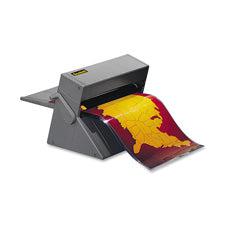Since the invention of lamination, business across the world have turned regular pieces of paper into banners, displays, signs, and things that can not only last a long time and not fall apart but also drive up sales and create a culture for a company that will speak directly to customers with vibrant color that doesn’t fade and materials that do not rip and tear.
It is easy to protect, maintain, and improve papers with a tested, proven, tough plastic coating by laminating them on a machine. And now there are multiple ways to laminate products such as papers and signs. Before, companies had to rely upon professionals to get this job done but now it can be done in a backroom of a company or at home with total ease.
Documents can be effectively protected from wrinkles, rips, spillage, fingerprinting, stained, and general wear by laminating them in addition to giving them a professional appearance.
There are multiple methods to get this done and each comes with its own benefits and features. Pouches, roll laminators, and fully automatic laminators are the principal kinds of lamination.
The document is placed directly within the plastic bag utilized by pouch laminating machines, which uses heat to bond the pouches together again and secure the paper inside. This is a typical and reasonably priced method of laminating goods and papers.
Fully automatic laminators accomplish the task entirely on their own and use an automated service to laminate the necessary item without the need for close supervision.
Because roll laminators are designed for high-volume laminating, frequently for larger products like banners and posters, they are better suited to commercial settings. High schools, sign-making businesses, and other establishments that require laminating big things frequently use these.
When looking for the right sort of laminating and binding products, a company needs to think about how much it is willing to spend, what they need to laminate, and the effort they want to put into it.
Laminating & Binding Buyer’s Guide

 Sold out
Sold out











